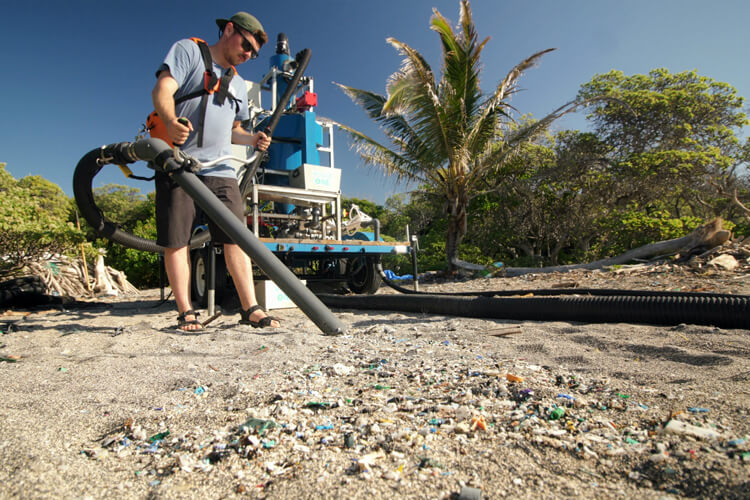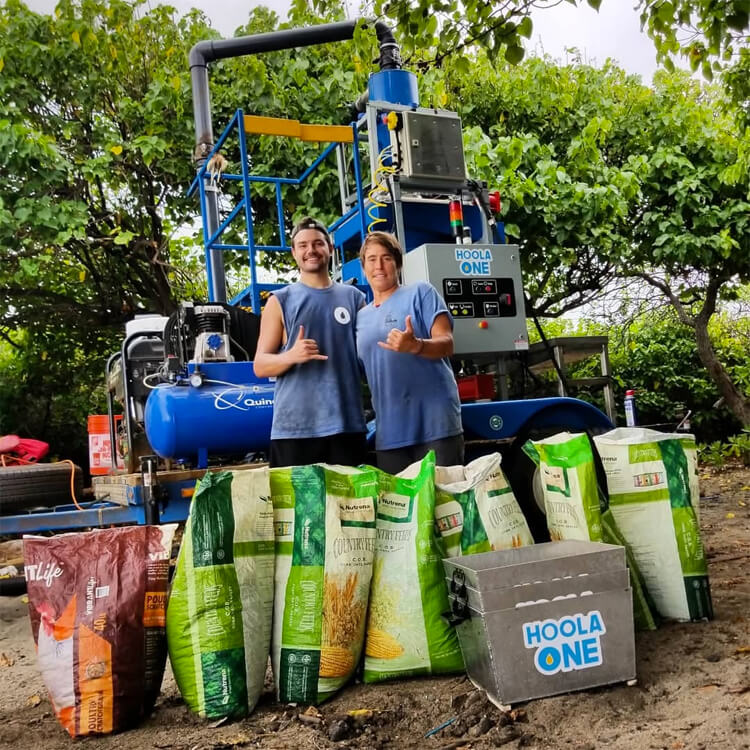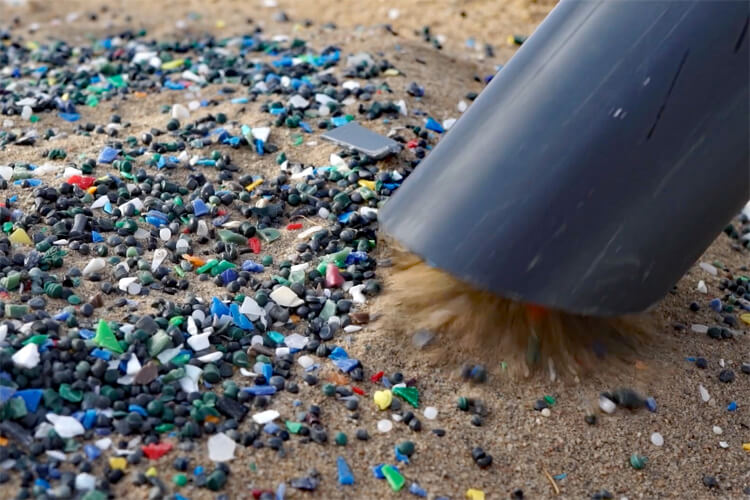Hoola One is an innovative machine that separates microplastics from sandy beaches.
The revolutionary structure was created by 12 mechanical engineering students from the University of Sherbrooke in Canada.
Hoola One was their final class project, but they didn't imagine the impact and response they would end up getting.
It all started around 2017 when one of the students saw the problems raised by microplastics at Kamilo Point in Hawaii and decided to build a machine capable of cleaning beaches.
Big Island's Kamilo Point is one of the most affected regions of the planet when it comes to plastic washing up on coastlines.
The Canadian students contacted Hawaii Wildlife Fund (HWF), an organization that runs several beach cleanups in the archipelago, who immediately welcomed the initiative.
Microplastics are tiny plastic particles created when larger plastic items - toothbrushes, bottles, bags, food containers, etc. - break down over decades.
Besides being toxic and non-biodegradable, the problem with microplastic is that it is not easy to pick up all the small pieces buried under the sand.
"We did some research and realized there were no machines in the world capable of doing this kind of job," explains Samuel Duval, co-founder of Hoola One.

First Tests at Kamilo Beach
The first prototype was put to the test at Kamilo Beach in Hawaii.
After two weeks of cleanups at Kamilo Beach, Hoola One proved it could be a solution to keep worldwide beaches free from microplastics.
Believe it or not, the beach-cleaning machine collected 230 pounds (104 kilograms) of microplastics.
In the end, the team donated the original prototype to HWF and started working on an updated version of the first model.
The goal was to get and collect inputs, suggestions, and improvement tips to help make a better Hoola One.
The engineers wanted to have a smaller machine that could be easily deployed at sand strips.
Hoola One is now a company in its own right with full-time members.
They're meeting up with non-profit organizations, beach cleanup groups, and local authorities to present the new commercial product.
The initial prototype cost around $70,000 to build, but the start-up was able to bring the cost down and scale its production.

The Mechanics of Hoola One
How is Hoola One able to separate microplastics from grains of sand?
The mechanics behind Hoola One are simple to understand yet require a fair amount of engineering.
"The concept is simple, but when you put all the elements together, it adds a lot of complexity," notes Duval.
The machine uses the principle of buoyancy. All the materials - plastics, sand, wood, and debris - are vacuumed into a container full of water.
The microplastic will float; the sand will sink and rest at the bottom.
Hoola One then removes the microplastics and puts the clean sand back on the beach.
The Canadian beach cleaning machine is more efficient compared to existing technologies because it recovers plastic particles as small as 50 micrometers (0.05 millimeters).
The Commercial Model
The new and updated Hoola One model was finalized in November 2020.
It is smaller and features three different modules, allowing users to access remote areas that are not served by roads.
Hoola One's commercial machine can be easily transported either by hand, truck, or boat and used in rugged terrains.
A second collection system is now able to cover larger surfaces on flat beaches, and the overall performance levels have been improved.
Although Hoola One is not meant to stop or reduce the use of plastics, it is a useful tool against beach and ocean pollution.
"What we're doing is not a reason to consume all the plastic we're using right now. Actually, it's kind of sad we have to build this machine," concludes Duval.
"The ultimate goal is to not have any plastic on the beach. If we can solve this problem with our machine, that would mean we've been successful."
